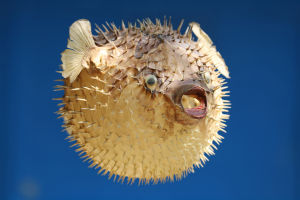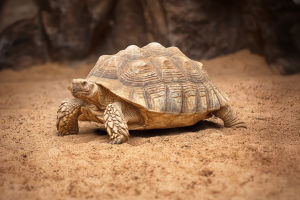As parents, we often consider getting a pet for our kids, thinking about how fun it would be to have an animal companion around. While it's commonly believed that pets are mostly for adults, that's not necessarily true!
Pets can be wonderful companions for children as well. Not only do they provide entertainment, but they also help children learn about animals, build emotional connections, and develop valuable skills like observation and responsibility.
However, many parents worry about whether pets could harm their kids. It's reassuring to know that studies have shown that children growing up in homes with pets or in larger families are actually less likely to suffer from allergic diseases and infections. This is due to the exposure to pets and their environments, which help strengthen the child's immune system.
But as we know, kids' immune systems and self-protection skills are still developing, so choosing the right pet is essential. Let's explore what pets are best for our little ones.
Choosing the Right Pets for Kids
When thinking about which pet is best for your child, it's important to choose one that is easy to take care of and doesn't pose a risk for allergies. If your child has an allergy condition, it's essential to pick pets that won't trigger these reactions. Some pets are more suited for children than others due to their size, temperament, and ease of care.
Suitable Pets for Kids
Some of the best pets for kids are small, clean, and easy to manage. Here's a list of some popular options:
• Rabbits: They are adorable, easy to care for, and make great companions for children.
• Turtles: Turtles are low-maintenance, and they can go for long periods without food.
• Fish: Fish are quiet and require very little attention, making them ideal for younger children.
• Cats: While cats can be playful and independent, they are also great pets for kids when treated with care.
• Small Dogs: Small breeds are perfect for kids since they're not too overwhelming in terms of size.
Pets to Avoid for Kids
Certain pets are best avoided due to their size, temperament, or potential risk. Large animals like goats, or poultry should be avoided. These animals can be more difficult to manage, and some may pose safety risks for young children.
How to Teach Kids to Interact with Pets
Teaching kids the right way to interact with pets is crucial for their safety and the pet's well-being. Here are a few tips:
1. Keep a Safe Distance: Teach your child to avoid getting too close to the pet, especially its face or mouth. Gentle petting is okay, but no hugging, kissing, or sharing the same bed with the animal.
2. Avoid Provoking Animals: Children are naturally curious, and pets are often small, so it's essential to tell your child not to pull their tails, tease them, or get too close to more aggressive animals.
3. Be Kind to Animals: Encourage your kids to treat pets with kindness and respect. Pets, especially smaller ones, may react defensively if they feel threatened.
4. Never Leave Kids Alone with Pets: Never leave a child under six alone with a pet, even if it's a calm one. Kids can accidentally harm the pet, and pets can also become startled and cause harm.
Essential Pet Care Tips
As responsible pet owners, it's important to ensure that pets remain healthy and clean. Here are some things to keep in mind:
• Make sure to take your pets to the vet regularly for checkups and vaccinations.
• Regularly bathe pets like cats and dogs.
• Ensure that pets do not sleep in the child's bed. A pet barrier around the child's bed can provide extra protection.
• Don't let the pet stay in the same room as the child at all times.
• Make sure pet food and water bowls are always clean.
• Keep pet enclosures, like fish tanks and birdcages, out of the child's reach.
• Never allow children to feed pets without supervision.
Best Pets for Children
Here are a few pets that are particularly great for kids due to their calm nature and low maintenance.
• Turtles: Turtles are incredibly easy to care for and can survive long periods without attention. Their gentle temperament makes them perfect for all ages.
• Cats: Cats are independent yet affectionate. They can entertain themselves but still seek interaction, making them excellent companions for children.
• Hamsters: Hamsters are small, cute, and incredibly easy to care for. They only need a clean cage, fresh food, and water, making them a great choice for busy families.
• Fish: A fish tank can be a calming presence in the home. Fish are easy to care for, and kids love watching them swim.
Benefits of Having a Pet
Pets bring so many benefits to kids. Let's explore some of the major advantages:
1. Health Benefits: Contrary to popular belief, pets don't pose health risks to children. Research shows that kids who grow up with pets are less likely to develop allergies and respiratory issues.
2. Building Confidence: Pets can help kids develop confidence. They often talk to pets, and this helps them express themselves freely.
3. Teaching Responsibility: Caring for a pet teaches kids responsibility. Giving them tasks like feeding, watering, or cleaning up after their pet helps them understand the importance of taking care of others.
4. Happiness: Having a pet can significantly boost a child's happiness. They feel more relaxed and fulfilled when they have a companion to love and care for.
Conclusion: The Power of Pets
In conclusion, having a pet can bring many positive changes to a child's life. Not only will it improve their health and confidence, but it will also teach them valuable lessons about responsibility and caring for others. If your child expresses interest in having a pet, consider one of the pets mentioned above, and watch your child's joy and sense of responsibility grow!
What do you think, Lykkers? Would a pet be the perfect addition to your home?


